Table of Contents
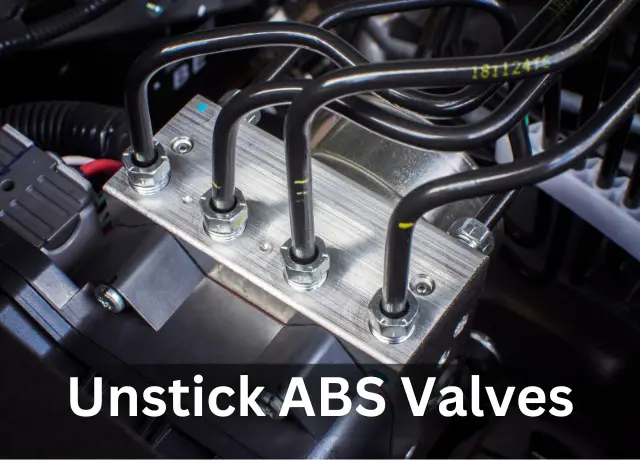
TAKE ACTION TODAY!
As a car owner, I can understand how frustrating it is to have stopped ABS valves, especially when time is running out. If the ABS is not taken care of properly, expensive fixes could be needed if nothing is done right away.
But instead of calling a professional right away, it’s important to know that there are ways to get rid of them yourself.
First, remove the screws from the control box and lift the connector. Next, heat the valve stems and apply the cleaning solution. After that, force air into the ports and apply rust remover. Try to get the air out of the ABS, and your brakes won’t rust.
In this article, I’ll show you step-by-step how to unstick ABS valves. At the end of this article, you’ll have the confidence and information to fix your ABS valves and get back on the road safely. So let’s get started!
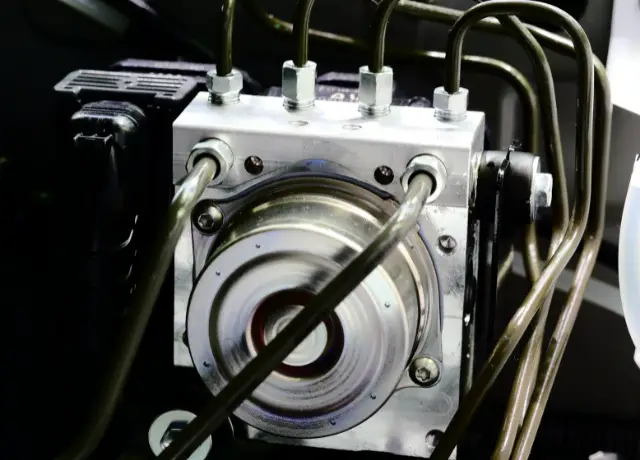
Understanding ABS Valves:
Understanding the function of ABS valves is essential for resolving the issue of blocked ABS valves.
To ensure that all four wheels receive the necessary quantity of braking force, these valves are responsible for regulating the brake system’s hydraulic pressure.
The loss of responsiveness of these valves can impair the performance of the anti-lock braking system and restrict the passage of brake fluid.

Symptoms of A Bad ABS Modulator Valve:
There are several signs of a bad ABS module, which may affect the proper function of your braking system, including:
- There may be a locking of the brake pedal
- Inaccurate speedometer readings may occur
- You may not be able to brake
- While driving, your ABS light might stay on
- The wheels don’t brake evenly.
- Grinding and squealing noises while braking.
There’s a good chance that you have got an abs solenoid valve malfunction if you notice any of these signs.
[azonpress_tables id=”5″]
Precautions and Safety Measures:
To prevent any damage to your braking system, you should take these precautions before attempting to unstick ABS valves:
- Be sure that the area where you park your vehicle is flat and stable.
- Make sure the parking brake is engaged and the wheels are chocked.
- Safety glasses and gloves should be worn.
- For specific instructions and warnings, refer to the owner’s manual of your vehicle.
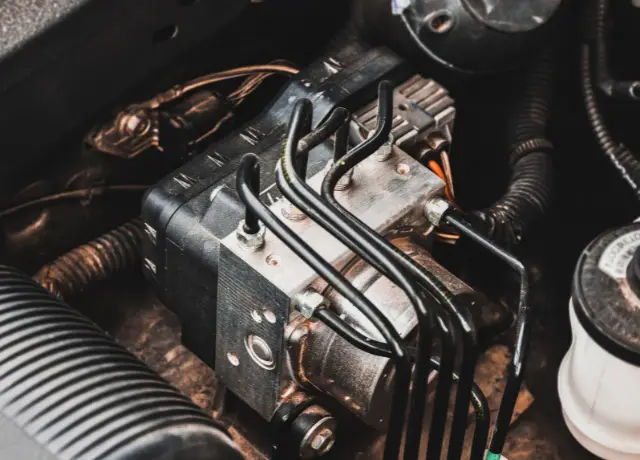
How Do You Clean ABS Valves?
You should clean your ABS valves even if they aren’t a priority for you, since if they aren’t maintained, dirt and sludge can spread dangerous toxins throughout your vehicle.
You will need considerable time and effort to access the pipes and hoses located deep within your vehicle.
An ABS valve can easily be cleaned with a few simple materials, such as:
- Cleaning Solutions
- Rubber Gloves
- A Sponge
- A Bowl
The first thing you need to do is wear rubber gloves, then take out the engine compartment and remove the battery. Next, use a sponge to apply some cleaning solution to get all the sludge out.
As soon as you’re finished, make sure to clean out the bowl thoroughly to prevent the liquid from seeping back into your car’s engine.
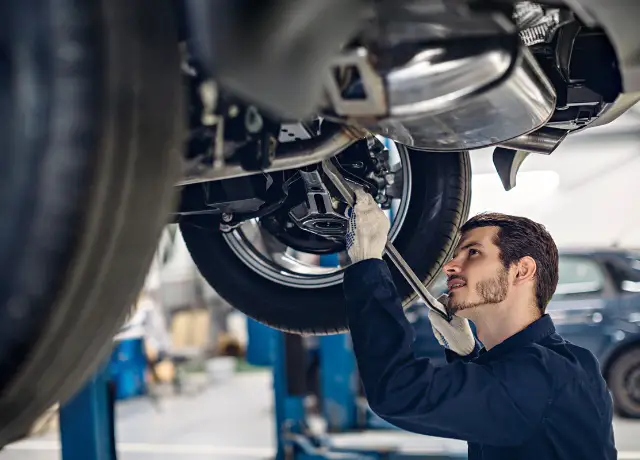
How to Un-stick ABS Valves:
Several individuals could benefit from my knowledge after noticing the abs module failure symptoms. I noticed that my brake pedal felt excessively firm while driving and sometimes appeared to be stuck at times.
After discussing it with my friend, a professional mechanic, we concluded that the ABS valves were to blame.
First, remove the fuse panel cover so you’ll have enough space to remove the control module bolts.
You can make it easier to access the control module by pushing the push connector upwards. To remove the swingable cover, press the clip at the bottom.
About twelve valves are expected in the pump, but extracting them is challenging because they’re sealed. To get past this, heat the stems of the valves and wipe the ports with a cleaner. You’ll get the ABS valves released this way.
Apply a rust dissolver after injecting air into the ports with an air compressor.
Blowing air for a few minutes can get rid of rust particles that were emitted from the valves after exposure to rust remover.
After everything’s been cleared, put everything back in its place since the valves are no longer rusted.

How To Bled ABS Module Without a Scanning Tool?
While mastering the technique of bleeding the ABS module without a scanner may require more time and effort, it is a simple one. Following are some steps you can take without a scanner to bleed the ABS module:
Tools needed:
- Wrench
- Jack
- Drip Pan
- Piece of Cloth
- New Oil
- A Transparent Plastic Tube
- Empty Bottle
Once the necessary equipment has been obtained, it is necessary to remove the wheel with a car jack and identify the bleeders. After locating the bleeders, remove the lower portion of the wheel to reveal the metal line containing a cap.
A drip pan should be placed beneath the metal lines before draining the fluid with a wrench.
Once the brake fluid has been discharged from the bleeders, start manually pressing the brake pedal repeatedly. Your vehicle’s four brakes should be inspected in this manner.
Add oil to the tank after it has been cleaned. If there are no problems with the brake pedal, then you can check the brakes.
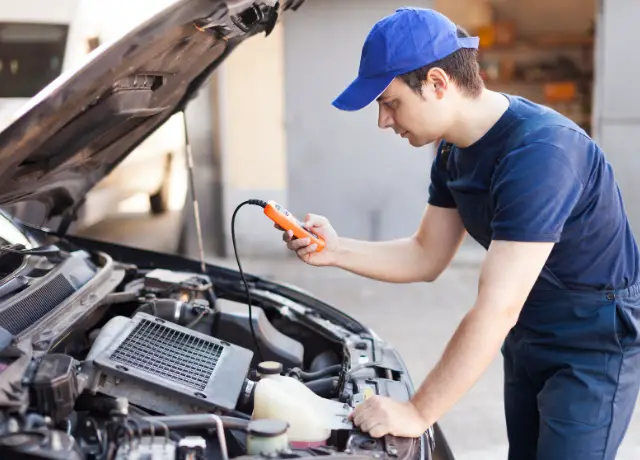
How To Bleed ABS Module Using A Scanning Tool:
New vehicles must be scanned to ensure that the valves are functioning properly so air can pass through them.
After starting your car and attaching the diagnostic tool, navigate effortlessly to the appropriate diagnostic menus using the accompanying manual.
Your software should let you choose which part of your brakes you want to bleed after you locate the right menu.
Follow the instructions and your system will start bleeding your brakes once you’ve selected the ones you need.
FAQs (How To Un-stick ABS Valves):
Q: How Do I Know If My ABS Solenoid Valve Malfunction?
Ans: The following are the symptoms of a bad abs modulator valve:
Braking pedals that pulse
Pressure loss in the brakes
Longer braking distances
When braking, there is an unusual noise
Dashboard ABS warning light
Difficulty to control or stop the vehicle during braking
The ABS modulator valve should be diagnosed and repaired by a professional technician if you see any of the signs of a bad ABS module.
Q: How Do You Clean ABS Hydraulic Units?
Ans: Experts need to have the right tools and know-how to clean the ABS hydraulic unit. Take your vehicle to a good service center or ask a qualified mechanic if you think your ABS hydraulic unit is having problems.
For those who insist on doing it themselves, this video may be helpful.
Q: How Do You Bypass An ABS Pump?
Ans: If you want your brakes to work safely, don’t bypass the ABS pump. While braking, the ABS pump prevents the wheels from locking up and maintains control over the vehicle.
A professional technician can check and fix your ABS pump if it’s malfunctioning so your brakes work properly.
Q: What Does the ABS Dump Valve Do?
Ans: The ABS dump valve relieves brake pressure during antilock braking events through the release of brake fluid.
In order to prevent skidding, the ABS system opens a dump valve when it detects wheel lock-up to temporarily release brake pressure.
As a result, the car is more stable and controllable during braking, especially when the surface is slippery or uneven.
Q: Will Disconnecting the Battery Reset the ABS Module?
Ans: The ABS module cannot be reset by removing the battery because cars have complex computer systems. Using a professional diagnostic tool or seeing a mechanic is the best way to reset the ABS module.
They’ll access your car’s onboard diagnostic system and set it up the right way.
Q: How Many Valves Are There In the ABS Module?
Ans: There are 12 valves in an ABS module. Four valves prevent the master cylinder from giving pressure to a specific wheel, while eight valves control the brake force for each wheel. Anti-lock brakes are controlled by this valve system.
Q: Should I Bleed the Brakes With The Engine Running?
Ans: It is not necessary to run the engine when bleeding the brakes. During brake bleeding, the air is removed from the brake lines to ensure the brakes are working efficiently. The engine should be off when doing this.
An engine running can make it difficult for the brake system to get rid of air since it needs a vacuum boost from the engine.
If you press the brake pedal repeatedly until it feels firm, you will be able to remove air from the brake lines.
Q: Can Air In Brake Lines Cause ABS Light?
Ans: The ABS light does not usually come on when there is air in the brake lines. The ABS light indicates that the ABS system has a problem, such as a broken sensor or valve.
The brakes can, however, be adversely affected by air in the brake lines.
A professional should be able to check and fix your brakes if you suspect they are leaking or if the ABS light is on.
Q: Is It Ok To Use Motor Oil Instead Of Brake Oil?
Ans: It is not recommended to replace brake fluid with motor oil. It can handle high temperatures and pressures because brake fluid is made for brakes.
It is possible for your brakes to fail or become damaged if you use motor oil.
No other fluid should be used besides the brake fluid recommended by the vehicle manufacturer.
Conclusion (Unsticking ABS valves):
Any driver who experiences a stuck ABS valve knows how frustrating it can be. Fortunately, your car’s brake system can be restored to its proper functioning state using the right tools and techniques.
As part of the process of unsticking ABS valves, one must identify the problem, assess the severity of the problem, and then take the appropriate action to resolve the issue.
When working with ABS valves, make sure you follow the manufacturer’s instructions. Make sure you keep your valves maintained and inspected regularly so you don’t get stuck valves in the first place.
Make sure the ABS system runs smoothly and safely by following these tips. If you ever get a stuck valve, take a deep breath, follow these steps, and you’ll be able to fix it in no time!




























































